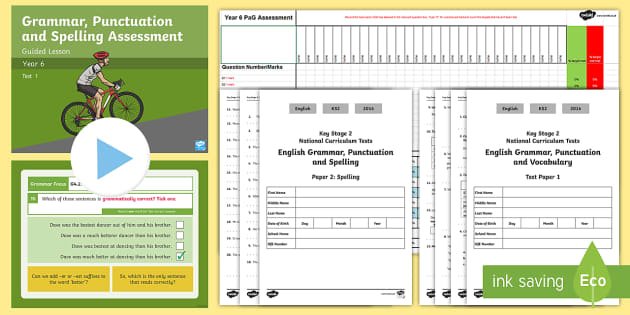If you are an IGNOU (Indira Gandhi National Open University) student, you already know how central assignments are to your course. They aren’t just practice sheets – they carry weight in your overall grade. In fact, without assignments, you won’t be allowed to sit for your term-end exams. That makes them a critical part of your academic journey.
But here’s something many students overlook: the way you submit your assignments matters too. Binding is one of those small but important steps that can affect how smoothly your work is processed and evaluated. If you’re confused about whether binding is compulsory, which method to use, or how much it costs, this article will clear things up.
Why Binding Your IGNOU Assignments Matters
IGNOU handles lakhs of students across India. Each regional center collects piles of assignments in bulk. Without binding, your pages can easily slip out, get misplaced, or be handed to the wrong evaluator.
Binding keeps your hard work safe, organized, and professional-looking. More importantly, it shows that you’ve put thought into how your work is presented. A neat, well-bound assignment is always easier for tutors to evaluate than loose sheets bundled together.
Think of it like this: your assignment is your project report. Would you hand in a report at work without organizing it properly? Probably not. Binding does the same job here.
Common Types of Binding for IGNOU Assignments
IGNOU doesn’t have one strict nationwide rule for binding, but most study centers and regional offices follow a few common practices. Here are the most widely used types:
1. Spiral Binding
- The most popular choice among students.
- Pages are punched and held together with a plastic coil.
- Looks neat, professional, and is easy for evaluators to flip through.
- Very affordable, usually ₹20–₹40 per assignment.
- Available in almost every photocopy or stationery shop near IGNOU centers.
2. Tag or Thread Binding
- A traditional method where pages are punched and tied with thread or secured with tags.
- Still accepted in many centers.
- Durable, though not as polished as spiral binding.
- Cheaper than spiral binding.
3. Stapled File Folder
- Assignments are stapled and placed inside a card or plastic folder.
- Works fine for assignments with fewer pages.
- Not suitable if your work runs into 30–40 pages.
4. Plastic Clip Files
- Pages are inserted into a file with a plastic grip.
- Convenient and reusable.
- Some centers accept this, but spiral binding is still the safer bet.
What Most Students Choose
In practice, spiral binding has become the default option. It strikes the right balance between cost, neatness, and durability. A set of five assignments usually costs less than ₹200 to bind. For most students, that’s a small price for peace of mind.
Still, it’s wise to confirm with your regional or study center before submission. A few centers still suggest tag binding, and you don’t want your assignments returned just because of a technicality.
Key Things to Do Before Binding
Before you head to the stationery shop, make sure you’ve checked the following:
- Arrange pages properly – Put them in order, number them clearly, and check that nothing is missing.
- Use the IGNOU cover page – Every assignment must start with the official cover page. It includes your name, enrollment number, program code, course code, study center code, and submission date. Download the format from the IGNOU site or get it from your center.
- Check details carefully – A wrong enrollment number or course code can cause your assignment to be misplaced or marked invalid.
- Bind each assignment separately – Never combine multiple subjects into one bound file. Each subject’s assignment should be an independent bound copy.
- Keep a copy for yourself – Scan or click photos of your completed assignments. Sometimes submissions get lost, and having proof helps.
- Don’t go overboard – Fancy covers or colored pages are unnecessary. Keep it simple and professional.
Step-by-Step Submission Process
- Write your assignments by hand (IGNOU does not allow printed or typed answers).
- Prepare and attach the prescribed cover page.
- Arrange all pages neatly and check your details.
- Go to a nearby binding shop and choose spiral or tag binding.
- Label each bound file clearly with your course code.
- Submit the assignments at your regional or study center before the last date.
FAQs on IGNOU Assignment Binding
Q1. Is binding compulsory for IGNOU assignments?
Not officially, but most centers strongly recommend it. Binding keeps your pages safe and ensures smooth evaluation.
Q2. Can I submit loose assignments without binding?
You can, but it’s risky. Loose sheets are more likely to get misplaced. Evaluators also find bound assignments easier to handle.
Q3. Which binding is best for IGNOU assignments?
Spiral binding is the most practical and widely accepted choice. It’s affordable, neat, and professional.
Q4. Do I need to bind each assignment separately?
Yes. Never combine multiple subjects in one file. Each course assignment should have its own cover page and binding.
Q5. How much does binding cost?
On average, ₹20–₹40 per assignment, depending on the number of pages and shop rates.
Q6. Can I use plastic clip files instead of binding?
Some centers allow them, but spiral binding is safer, especially for large submissions.
Q7. Should I attach the question paper with the assignment?
No. Only answer sheets with the prescribed cover page are required, unless your center specifically tells you otherwise.
Q8. What happens if I bind incorrectly?
If details are missing, pages are out of order, or multiple assignments are combined, evaluators may refuse them. Always follow the guidelines.
Q9. Do I need to use a specific color for covers?
No. IGNOU doesn’t require colored covers. A plain printed cover page is enough.
Q10. Can I rebind after submission deadlines?
No. Once submitted, you can’t edit or rebind. That’s why you should double-check before submission.
Final Thoughts
Binding your IGNOU assignments isn’t just about neatness – it’s about protecting the effort you’ve put in. A simple spiral or tag binding can save you from the headache of lost pages and rejected submissions.
Always check with your regional center for specific instructions, but when in doubt, go for spiral binding. It’s reliable, affordable, and accepted almost everywhere. At the end of the day, how you present your assignments reflects your seriousness as a student.
A little extra effort in binding can go a long way in ensuring your hard work gets the credit it deserves.




